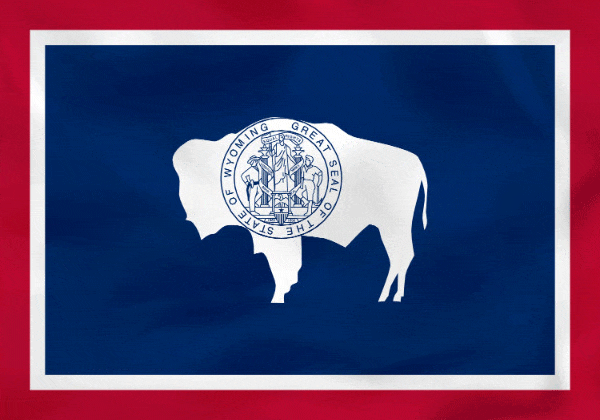 History The U.S. acquired the land comprising Wyoming from France as part of the Louisiana Purchase in 1803. John Colter, a fur-trapper, is the first white man known to have entered the region. In 1807 he explored the Yellowstone area and brought back news of its geysers and hot springs. Robert Stuart pioneered the Oregon Trail across Wyoming in 1812–1813 and, in 1834, Fort Laramie, the first permanent trading post in Wyoming, was built. Western Wyoming was obtained by the U.S. in the 1846 Oregon Treaty with Great Britain and as a result of the treaty ending the Mexican War in 1848. When the Wyoming Territory was organized in 1869, Wyoming women became the first in the nation to obtain the right to vote. In 1925 Mrs. Nellie Tayloe Ross became the first woman governor in the United States. Wyoming's towering mountains and vast plains provide spectacular scenery, grazing lands for sheep and cattle, and rich mineral deposits. Mining, particularly oil and natural gas, is the most important industry. Wyoming has the world's largest sodium carbonate (natrona) deposits and has the nation's second largest uranium deposits. In 2004 Wyoming ranked second among the states in wool production (exceeded only by Texas) and third in sheep and lambs (exceeded only by Texas and California); it also had 1,400,000 cattle. Principal crops include wheat, oats, sugar beets, corn, barley, and alfalfa. Second in mean elevation to Colorado, Wyoming has many attractions for the tourist trade, notably Yellowstone National Park. Hikers, campers and skiers are attracted to Grand Teton National Park and Jackson Hole National Monument in the Teton Range of the Rockies. Cheyenne is famous for its annual "Frontier Days" celebration. Flaming Gorge, the Fort Laramie National Historic Site, and Devils Tower and Fossil Butte National Monuments are other points of interest.
|
Wyoming
Read this profile of Wyoming to learn about the state's history, points of interest, and government. Also find interesting facts about each state, including the state's motto, symbols, and when it entered the union.





